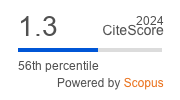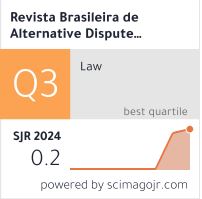Rethinking diversion programs in Indonesia
a critical analysis through the lens of social and cultural context
Schlagworte:
Diversion Programs, Juvenile Justice System, Pancasila Justice, Legal CultureAbstract
This research aims to critique how diversion programs have been implemented in Indonesia from the point of view of the social and cultural environment. The gathered information will be subjected to a qualitative analysis that uses inductive and deductive reasoning techniques. According to the findings, at least three aspects are deficient: legal substance, which refers to the concordance of underlying regulations and guidelines for its implementation; legal structure; and cultural factors, which play a role in its implementation internally and externally (within law enforcement). In addition, the study highlights the necessity for additional research on the success rate of adopting diversion and building a new legal culture in society that promotes diversion as a method for resolving criminal cases involving children. This is a necessity brought to light by the study’s findings. This research may provide valuable insights into the advantages and disadvantages of the system already in place.
Literaturhinweise
Agnew, Robert, and Timothy Brezina. Juvenile Delinquency: Causes and Control. New York: Oxford University Press, 2012.
Aji, Wikan Sinatrio. “The Implementation of Diversion and Restorative Justice in the Juvenile Criminal Justice System in Indonesia”. Journal of Indonesian Legal Studies 4, no. 1 (April 23, 2019): 73–88. https://doi.org/10.15294/jils.v4i01.23339.
AL-Ghazali, Malik. “Restorative Justice Approach on The Under Age (Minors) Violator of The Traffic Case Accident (Laka) That Lead to Death in Polres Majalengka”. Jurnal Daulat Hukum 1, no. 3 (September 7, 2018): 705–12. https://doi.org/10.30659/jdh.v1i3.3371.
Anggraeni, Anggita. “Penal Mediation as Alternative Dispute Resolution: A Criminal Law Reform in Indonesia”. Journal of Law and Legal Reform 1, no. 2 (January 26, 2020): 369–80. https://doi.org/10.15294/jllr.v1i2.35409.
Aprilianda, Nurini, Mufatikhatul Farikhah, and Liza Agnesta Krisna. “Critical Review Selecting a Proper Law to Resolve Sexual Violence Against Children”. Samarah: Jurnal Hukum Keluarga Dan Hukum Islam 6, no. 2 (December 31, 2022): 954–72. https://doi.org/10.22373/sjhk.v6i2.9050.
Arief, Barda Nawawi. Beberapa Aspek Pengembangan Ilmu Hukum Pidana (Menyonsong Generasi Baru Hukum Pidana Indonesia). Pidato Pengukuhan Guru Besar Ilmu Hukum Pidana Fakultas Hukum Universitas Diponegoro. Semarang: Penerbit Pustaka Magister, 2011.
Arief, Barda Nawawi. Perbandingan Hukum Pidana. Jakarta: Rajawali Pers, 2011.
Aryana, I Wayan. “The Reformulation of Restitution Concept in Juvenile Cases (A Comparative Study with Philippines and Thailand)”. Padjadjaran: Jurnal Ilmu Hukum (Journal of Law) 7, no. 3 (January 2021): 400–420. https://doi.org/10.22304/pjih.v7n3.a6.
Bagattini, Alexander. “Child Well-Being: A Philosophical Perspective”. In Handbook of Child Well-Being: Theories, Methods, and Policies in Global Perspective, edited by Asher Ben-Arieh, Ferran Casas, Ivar Frønes, and Jill E. Korbin, 163–86. Dordrecht: Springer Netherlands, 2014. https://doi.org/10.1007/978-90-481-9063-8_8.
Bazemore, Gordon, Joe Hudson, and Mara Schiff. Juvenile Justice Reform and Restorative Justice. Willan, 2013.
Borduin, Charles M., Barton J. Mann, Lynn T. Cone, Scott W. Henggeler, Bethany R. Fucci, David M. Blaske, and Robert A. Williams. “Multisystemic Treatment of Serious Juvenile Offenders: Long-Term Prevention of Criminality and Violence”. Journal of Consulting and Clinical Psychology 63, no. 4 (1995): 569–78. https://doi.org/10.1037/0022-006X.63.4.569.
Braithwaite, John, and Stephen Mugford. “Conditions of Successful Reintegration Ceremonies: Dealing with Juvenile Offenders”. In Restorative Justice, 3–35. Routledge, 2017.
Darmini, Darmini. “Pelaksanaan Diversi Pada Sistem Peradilan Anak”. QAWWAM 13, no. 1 (2019): 43–63.
Daud, Brian Septiadi, and Irma Cahyaningtyas. “Criminal Justice System Toward Children With Legal Conflict Seen In Justice Restorative Presfective”. Jurnal Hukum Prasada 7, no. 1 (April 7, 2020): 14–26. https://doi.org/10.22225/jhp.7.1.1223.14-26.
Dewi, D.S., and Fatahillah A. Syukur. Mediasi Penal: Penerapan Restorative Justice Di Pengadilan Anak Indonesia. Indie Pub., 2011.
Diduck, Alison, Noam Peleg, and Helen Reece. Law in Society: Reflections on Children, Family, Culture and Philosophy: Essays in Honour of Michael Freeman. Brill, 2015.
Djaini, Alan, Fence M. Wantu, and Lusiana Margareth Tijow. “Legal Protection of Child Adoption without Trial by Human Rights Perspective”. Damhil Law Journal 1, no. 1 (May 26, 2021): 20–30. https://doi.org/10.56591/dlj.v1i1.627.
Djamil, Nasar. Anak Bukan Untuk Dihukum: Catatan Pembahasan UU Sistem Peradilan Anak (UU-SSPA). Jakarta: Sinar Grafika, 2013.
Dwipayana, Anak Agung Putra, Jawade Hafidz, and Aryani Witasari. “The Implementation of Diversion in Handling of Criminal Actions Performed by Child”. Law Development Journal 4, no. 2 (2022): 339–46. https://doi.org/10.30659/ldj.4.2.339-346.
Federle, Katherine Hunt. “Making Meaningful the Right to Appeal under the Convention on the Rights of the Child”. The International Journal of Children’s Rights 25, no. 1 (June 20, 2017): 3–23. https://doi.org/10.1163/15718182-02501001.
Fitriana, Mimi, and Nur Hamizah Ramli. “Psychosocial Determinants of Antisocial Behavior among Young Adults in Kuala Lumpur”. In Proceedings of the 2nd International Conference on Intervention and Applied Psychology (ICIAP 2018). Depok, Indonesia: Atlantis Press, 2019. https://doi.org/10.2991/iciap-18.2019.8.
Frehsee, Detlev. “Restitution and Offender-Victim Arrangement in German Criminal Law: Development and Theoretical Implications”. Buffalo Criminal Law Review 3, no. 1 (1999): 235–59. https://doi.org/10.1525/nclr.1999.3.1.235.
Friedman, L.M. The Legal System: A Social Science Perspective. Russell Sage Foundation, 1975.
Hafrida, Hafrida. “Restorative Justice In Juvenile Justice To Formulate Integrated Child Criminal Court”. Jurnal Hukum Dan Peradilan 8, no. 3 (December 12, 2019): 439–57. https://doi.org/10.25216/JHP.8.3.2019.439-457.
Harefa, Beniharmoni. Kapita Selekta Perlindungan Hukum Bagi Anak. Yogyakarta: Deepublish, 2019.
Hart, Henry M. “The Aims of the Criminal Law”. Law and Contemporary Problems 23, no. 3 (1958): 401–41. https://doi.org/10.2307/1190221.
Jackson, Jonathan. “Experience and Expression: Social and Cultural Significance in the Fear of Crime”. The British Journal of Criminology 44, no. 6 (May 2004): 946–66. https://doi.org/10.1093/bjc/azh048.
Kuhn, Thomas S. The Structure of Scientific Revolutions. [2d ed., Enl. International Encyclopedia of Unified Science. Foundations of the Unity of Science, v. 2, No. 2. Chicago: University of Chicago Press, 1970.
Kurniawan, Yunan Prasetyo, Hartiwiningsih, Hari Purwardi, and Soehartono. “Restorative Justice (Diversi): A Harmonization Effort of Legal Protection Against Child Criminal as Offender and Victim”. In Proceedings of the International Conference on Law, Economics and Health (ICLEH 2020). Semarang, Indonesia: Atlantis Press, 2020. https://doi.org/10.2991/aebmr.k.200513.135.
Downloads
Veröffentlicht
Ausgabe
Rubrik
Lizenz
Copyright (c) 2024 Revista Brasileira de Alternative Dispute Resolution - Brazilian Journal of Alternative Dispute Resolution - RBADR

Dieses Werk steht unter der Lizenz Creative Commons Namensnennung 4.0 International.
No royalties or other compensation shall be due for the publication of the works.
The opinions expressed by the authors of the articles and reviews are their sole responsibility.









